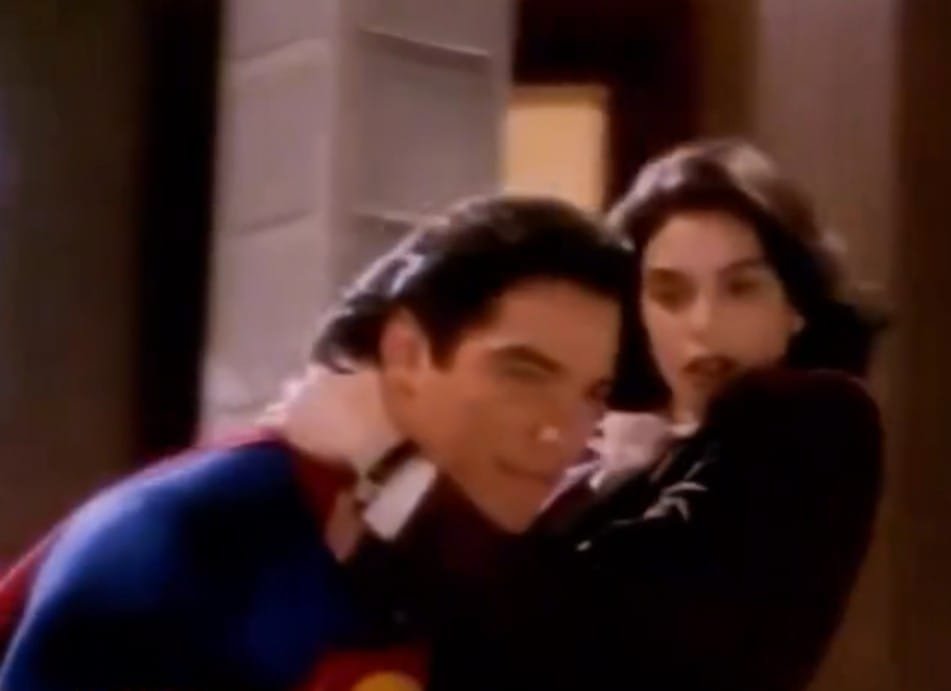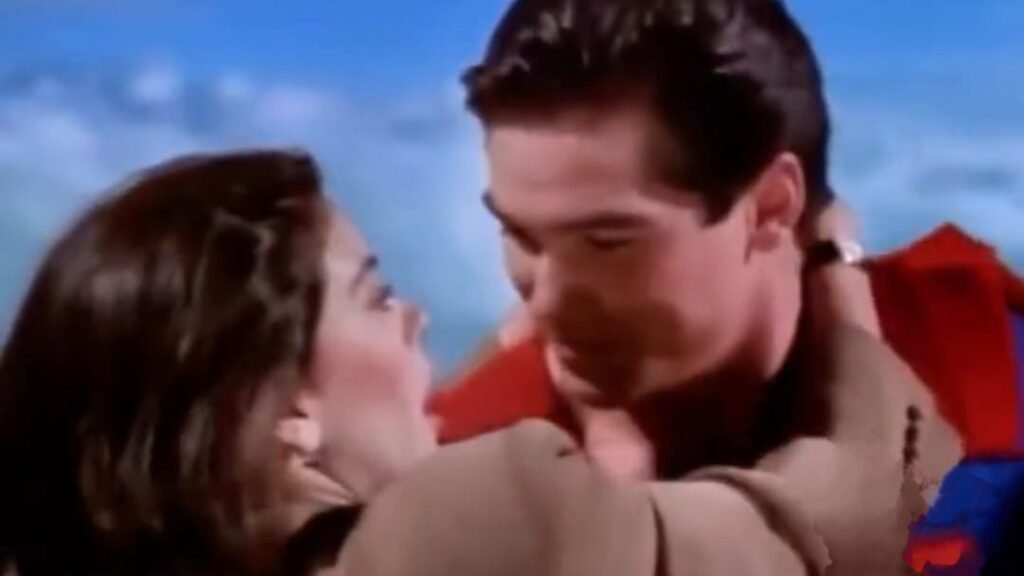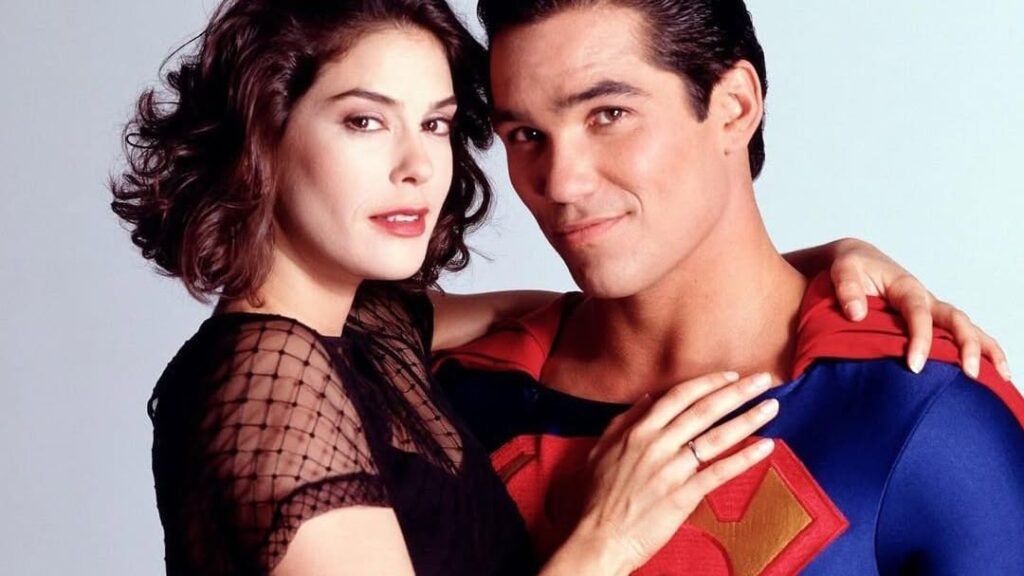Dean Cain reveals the painful truth behind Lois & Clark’s iconic flying scenes — Teri Hatcher cried during every flight due to a painful harness. Discover the behind-the-scenes struggles they faced and why it still matters today.
When many fans think back to the 90s classic show Lois & Clark: The New Adventures of Superman, a sense of nostalgia and fond memories of its chemistry and charm come flooding back to their minds. This is understood, as the show introduced a new iteration of the claimed modern American hero into prime-time network television. But with its magical flying scenes and all of the bloody desire to be Superman, the reality of the shoot was significantly brighter — for Teri Hatcher, in particular.
In an interview recently posted, Dean Cain, who played Superman/Clark Kent, spoke frankly about the difficult reason his co-star would cry during every flying scene. And now that we know what they were putting themselves through, you probably think, “I don’t blame her.”
So let us get into what it took to make the flying scenes — the pain, the pressure, and the price of making TV magic.
The Truth Behind the Flying Scenes: Painful Harnesses & Circulation Cut-Offs

A Superhuman Feat with a Human Toll
In a recent interview, Dean Cain revealed what it physically cost him and Hatcher during the flying scenes. Although flying appeared easy on television, the method of flight was actually accomplished by wearing harnesses around their bodies and hanging them from wires — not something particularly easy or enjoyable.
The equipment was so tight that blood flow was cut off, and the pain was definitely high. Cain even needed to get massages after scenes just to allow normal blood flow to return to his arms and legs. But Hatcher, he said, was even worse – many times to the point of tears.
Why Teri Hatcher’s Pain was Worse Than Cain’s
Anatomical Challenges and Costume Design
It’s critical to understand that flying harnesses are not one-size-fits-all. Female actors, in particular, face unique physical challenges with flying harnesses. For instance, the distribution of the straps around certain parts of a woman’s anatomy (e.g., ribs, shoulders, and hips) can result in pinching, bruising, and even other things.
In Hatcher’s situation, her costume was form-fitting and restrictive with minimal padding between her body and the rigid harness, so what was supposed to be romantic or heroic scenes were a complete disaster for her.
The Illusion of Flying in Hollywood

What We See vs. What They Feel
What made Lois & Clark magical was that it appeared that flying was effortless. Audience members were gazing upon a caped Superman lifting Lois Lane into the clouds — while off-camera, there was a huge logistical nightmare of wires, green screens, cranes, and choreographed body movements.
In order to sustain the illusion:
Actors had to hang for hours at a time.
Actors had to remain completely still while taking the pain.
Crew members manipulated light and wind around them.
Retakes were frequent, which meant being suspended multiple times in the painful gear.
Other Stars Who Have Suffered for Their Roles
It’s Not Just Superman and Lois
This is not an isolated event. Numerous actors who have played superheroes or fantasy characters have shared horror stories about uncomfortable costumes or stunts:
Tom Holland once said that bathroom breaks were “almost impossible” in his Spider-Man suit.
Scarlett Johansson has commented that the Black Widow suit was “hot, tight, and constricting.”
Christian Bale had to lose and gain an insane amount of weight for Batman and The Machinist, which ended up costing him years of poor health.
Clearly, behind every amazing shot lies pain and sacrifice.
The Mental and Emotional Toll on Set
Pain Beyond the Physical — The Emotional Drain
For Teri Hatcher, the suffering was not just physical. In Cain’s words, it was “like a weight” to watch her breakdown, especially in the flying scenes. Those scenes often required some intimacy due to the emotional connection required, and all Teri could focus on was just trying to manage the pain.
“We’re supposed to be happy, and in love, and in the sky,” Cain said.
“But all she could do was grit her teeth and try not to cry.”
And she was not acting; the tears were real.
A Proclamation of Professionalism
Hatcher’s Performance in Pain
Regardless of everything, Hatcher masked her pain on camera. She bears the burden of discomfort with grace and charm, evoking true love and scheming. This was a hallmark of not only her phenomenal professional space but also her loyalty to the role. For years, fans believed the flights were romantic. Now knowing the truth, they are heroic.
Where Cain Stands Today
Cain’s stories were not intended to disparage the show, but instead celebrate Hatcher’s commitment. He emphasized that while both actors were in pain, her pain was on another level.
And in today’s Hollywood -where better stunt practices, CGI, and actor safety are improving – this stands as proof of how far the industry has come.
Why This Matters in 2025
In an increasingly vocal time in the industry surrounding mental health, working conditions, and body autonomy, there are greater stakes for stories like Hatcher’s. They enjoin the collective conscience and underscore the need for advocacy in safer sets, appropriate stunt gear, and the knowledge of what they go through behind closed doors.
Final Thoughts: The Cost of TV Magic — And Why It Still Motivates Us
Behind every smooth movement across the screen, there is a story — not simply of wires or effects, but of hard work, pain, and professionalism. Dean Cain’s experience with Teri Hatcher’s time on Lois & Clark reminds us that being a hero is more than just capes and flight — it’s about toughness, bravery, and giving it your best when it hurts!
FAQs
1. Why did Teri Hatcher cry every time they did a flying scene?
Teri Hatcher cried from the flying harness being uncomfortably tight and painful, and more importantly, cutting off her circulation. The pain was so bad that she would occasionally cry.
2. Did Dean Cain cry with the harness?
Yes, Dean Cain was also in pain. He disclosed that the harness did compress his circulation, and he also did massages after.
3. Were flying scenes that tough to film in the ’90s?
Yes. Flying scenes were difficult because if actors were attached to wires (and they were most of the time), and then they were separated and put in green suits, they were off the hook literally too long. Today’s CGI would make it easy. The practical effects in a 90s show included wire work and green screens/backdrops that actors had to stay in position.
